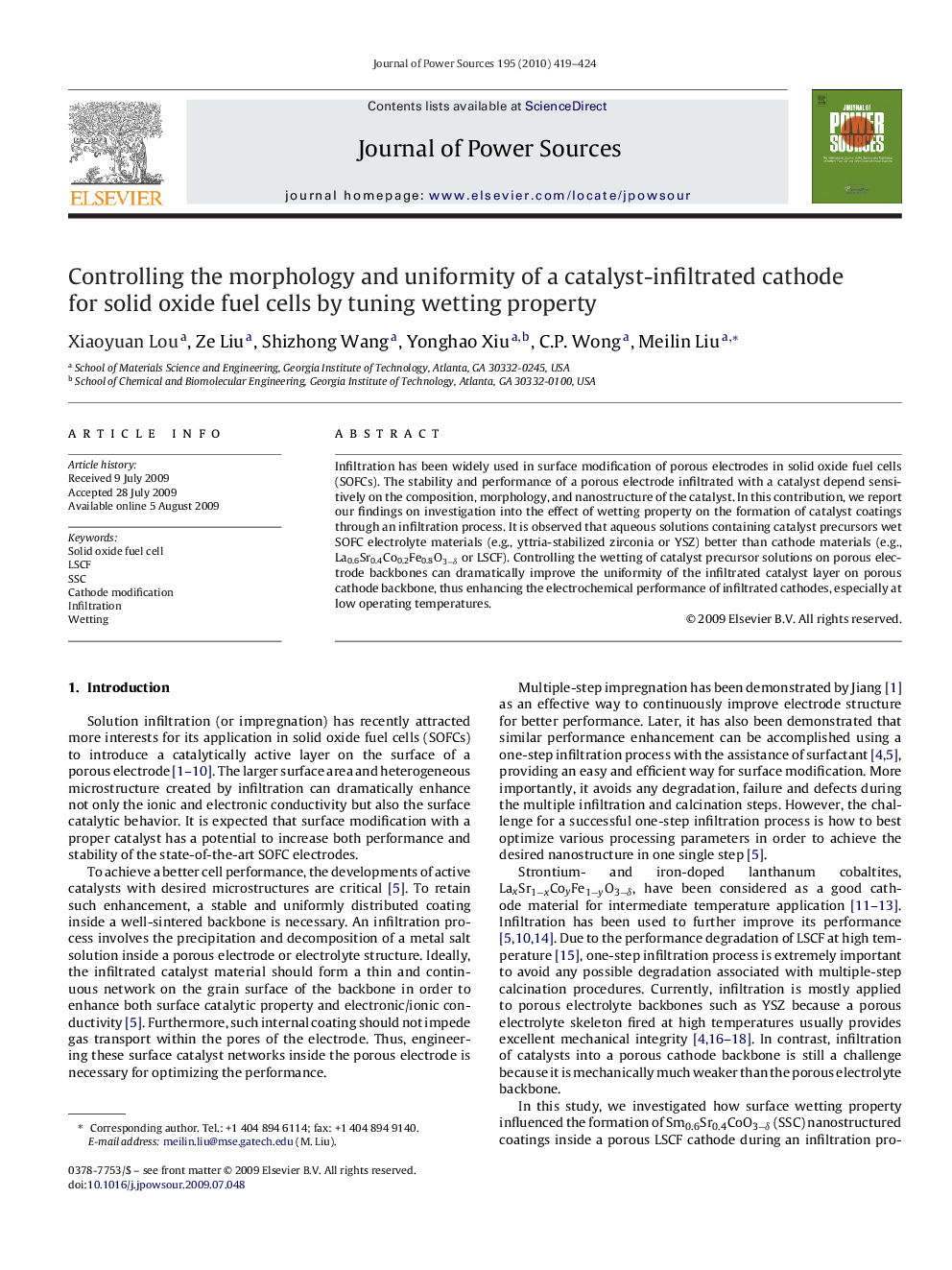| Article ID | Journal | Published Year | Pages | File Type |
|---|---|---|---|---|
| 1293882 | Journal of Power Sources | 2010 | 6 Pages |
Infiltration has been widely used in surface modification of porous electrodes in solid oxide fuel cells (SOFCs). The stability and performance of a porous electrode infiltrated with a catalyst depend sensitively on the composition, morphology, and nanostructure of the catalyst. In this contribution, we report our findings on investigation into the effect of wetting property on the formation of catalyst coatings through an infiltration process. It is observed that aqueous solutions containing catalyst precursors wet SOFC electrolyte materials (e.g., yttria-stabilized zirconia or YSZ) better than cathode materials (e.g., La0.6Sr0.4Co0.2Fe0.8O3−δ or LSCF). Controlling the wetting of catalyst precursor solutions on porous electrode backbones can dramatically improve the uniformity of the infiltrated catalyst layer on porous cathode backbone, thus enhancing the electrochemical performance of infiltrated cathodes, especially at low operating temperatures.
